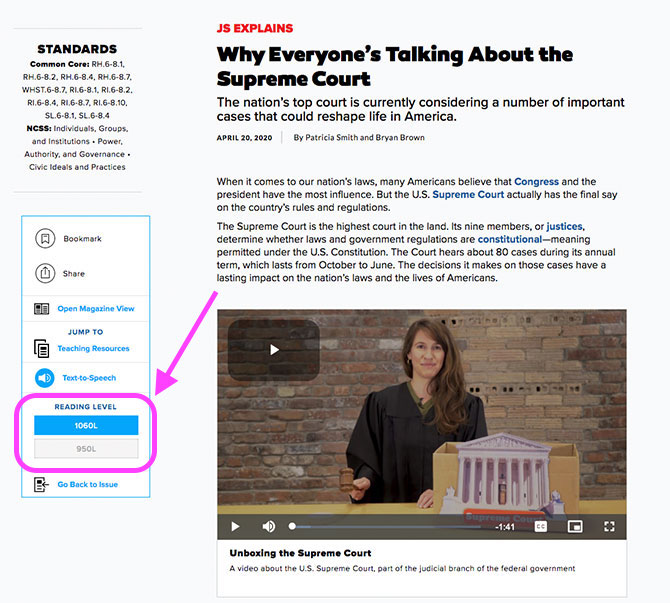Teaching With Text Sets
Teaching With Text Sets
Text sets are collections of articles curated by the editors of Junior Scholastic. Consider these teaching ideas as you and your students explore the collections.
Many teachers use texts sets for independent reading, while others use them for whole-class or small-group instruction. Here’s how Junior Scholastic text sets can help you inspire students to read, gain content knowledge, and synthesize information.
Foster Student Choice | Differentiate Instruction | Build Background | Support Comprehension | Guide Critical Thinking | Reflect After Reading | Launch Research Projects
Foster Student Choice
Foster Student Choice
When using text sets for independent reading, empower students to explore their interests by allowing them to choose which sets to read or which texts to read in a set. You can form discussion groups of students who choose the same texts. You can have students prepare for these discussions by using the Close Reading Checklist Skill Builder, found in our Graphic Organizer Library.
Differentiate Instruction
Differentiate Instruction
You can support struggling readers and English learners by using alternate versions of texts, especially for guided reading or small-group instruction. Most of our text set articles are available at a lower reading level, which you can access from this toolbar on the article page:

Build Background
Build Background
When using texts to teach students about popular curricular topics in whole-group instruction, play a video from the text set to build students’ knowledge before they read. You can give students an active listening task. After watching the video once, play it again and pause to discuss key ideas and check for understanding.
Support Comprehension
Support Comprehension
Each text set comes with four graphic organizers, such as:
- Similarities and Differences: A Venn diagram supports students in comparing two people, events, or ideas from a set.
- What's It All About?: Use this chart to identify the central ideas and important details, then use it to build a summary of an article.
- DIY Vocabulary: Have students define and practice using three unfamiliar terms from the article.
- Sum It Up: Learn the difference between an objective summary and a review, and have students practice synthesizing the information they learned to write a summary.

Guide Critical Thinking
Guide Critical Thinking
Help students understand features of nonfiction texts. Point out the dateline at the beginning of each article that shows when it was published. Explain how students can use that information to understand relative dates, such as “this month,” “last December,” and “by the end of this summer.”
Reflect After Reading
Reflect After Reading
After the class explores a text set, guide students to reflect on it. Lead a discussion by asking questions such as:
• What surprised or confused you?
• What did the author think you already knew?
• What changed the way you think about something?
• What made you want to learn more?
• What do you still wonder about?
Launch Research Projects
Launch Research Projects
Use text sets as a springboard to launch research projects. Have students develop questions they want to explore based on their reading. Then guide students to find credible sources, take notes, organize information, and present their findings with a poster, report, video, podcast, or slideshow.
